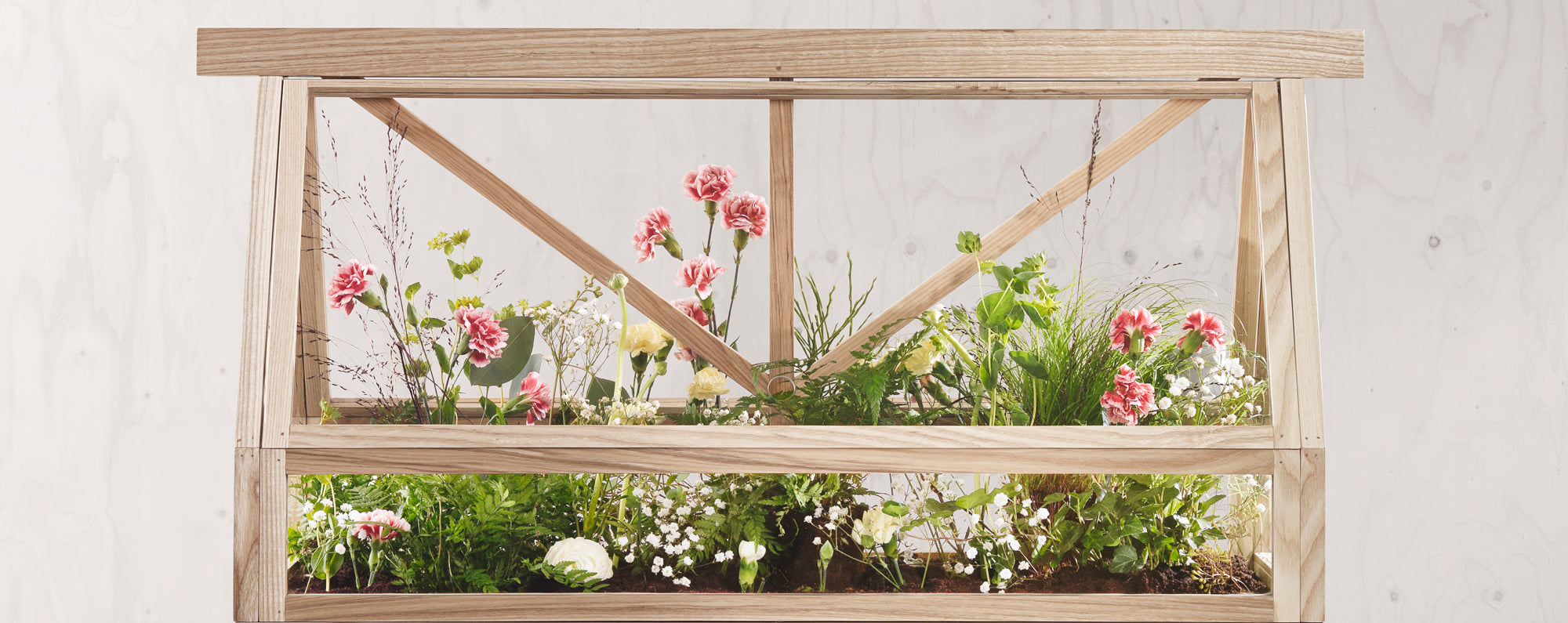Miniature Worlds
The growing trend for interior greenery has led to something of a rebirth for the Victorian Terrarium craze. Like Cacti's and Succulents it's appeal is obvious - low maintenance & idiot-proof planting for the time poor but inquisitive gardener. Once the lid is closed on a Terrarium it turns into a self-sufficient miniature world with very little need for water, or anything for that matter.
Terrariums were first created by botanist Nathaniel Bagshaw Ward in 1842 and were first known as 'Wardian Cases'. The story goes that Ward hired carpenters to build cases to export native British plants to Australia. After months of travel, the plants arrived well and thriving. Likewise, plants from Australia were sent to London using the same method and Ward received his Australian plants in perfect condition. The trend quickly spread amongst the English with his experiment indicating that plants can be sealed in glass without ventilation and continue thriving.
The Greenhouse designed by Atelier2+ (Worapong Manupipatpong and Ada Chirakranont) for Design House Stockholm is a modern interpretation of the Wardian Case that has a very Swedish Architectural aesthetic about itself.
Swedish architecture looks the way it does to protect people against wind and hard weather and almost everything else that has the potential to make life uncomfortable. The task that the Thai design studio Atelier 2+ have allotted to their Greenhouse is doing the opposite: opening the door to flora and fauna. When Worapong Manupipatpong and Ada Chirakranont talk about their Greenhouse they describe it as a terrarium and it fulfils this function just as well as that of a greenhouse for plants, either reducing the world around to let a small landscape move in beneath a glass roof, or perhaps even providing a habitat for some small domestic animal!
Greenhouse was originally created for Wallpaper Magazine's Handmade issue (Thailand edition) and then subsequently exhibited at the Bangkok 2015 furniture fair. It was here that it was a love-at-first-sight encounter for Anders Färdig, managing director of Design House Stockholm - “I liked it immediately, feeling that it was very Scandinavian in its architecture.” The fact that Worapong Manupipatpong and Ada Chirakranont are attracted by the tradition of Scandinavian design, which Design House Stockholm is seeking to renew, is not as strange as it might seem. They both studied at Konstfack, University College of Arts, Crafts and Design in Stockholm, though Anders Färdig was not aware of this when he started his collaboration with Atelier 2+ on the floor of the Bangkok fair. We live in a very small world, miniature you might even say.




